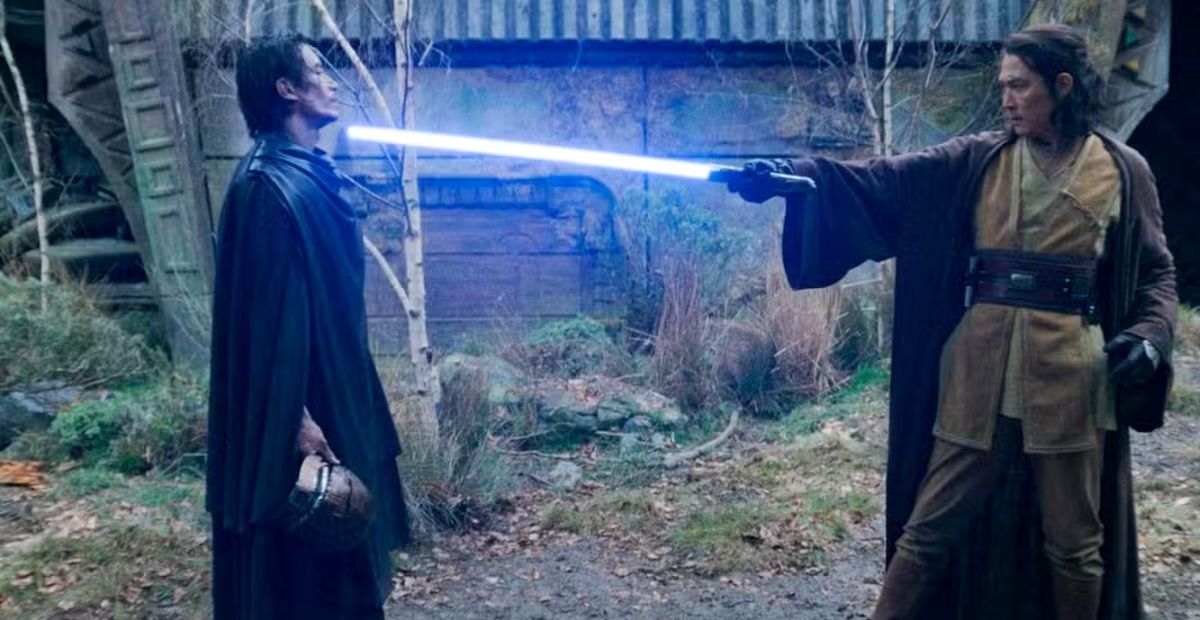Let’s be honest: The Acolyte brought a lot of excitement with its promise to explore the shadowy era before The Phantom Menace. Finally, we’d get to see a side of the Force rarely touched in Star Wars. But as much as the series brought fresh perspectives and some bold storytelling, it’s not without its flaws. I know I’m not alone in feeling that certain parts of The Acolyte missed the mark.
Maybe you’re like me, finding yourself both frustrated and fascinated. Sure, there are story elements and pacing issues we could talk about, but let’s set that aside for now. Because there’s one thing we have to give The Acolyte credit for: Sol and Qimir. These two characters are, without a doubt, the heart of the series, bringing something truly memorable to each scene they’re in.
Qimir – The Sith Lord We Didn’t Know We Needed
Despite my issues with The Acolyte, I can’t deny that Qimir quickly became a standout character for me.
With Manny Jacinto bringing his charisma and layered intensity to the role, Qimir felt like a fresh take on the dark side—one that wasn’t just about power, but about vulnerability and connection.
Unlike past Sith Lords, who often embodied pure ambition or revenge, Qimir had a complexity that made him feel like so much more.
He was ruthless yet tender, driven by his own desires but emotionally invested in his bond with Osha, almost like a dark mirror to relationships we’ve seen before in Star Wars.
One of the greatest strengths of Qimir’s character was how he broke the mold of what we expect from a Sith Lord.
Where characters like Vader and Maul were fueled by rage or a thirst for power, Qimir seemed motivated by a mix of personal ambition and an almost haunting need for companionship.
His dynamic with Osha brought an unexpected depth, similar to the Rey and Kylo Ren connection—but with the Sith’s unique twist.
In a way, he represented what makes the Sith truly dangerous: not just their power, but their willingness to risk everything to fulfill their own desires.
Qimir’s storyline was perfectly set up to be something truly new in Star Wars.
With Darth Plagueis waiting in the shadows, there was room for Qimir to reveal the complexity of the dark side in ways we’ve never fully seen on screen.
But with the abrupt cancellation, fans are left wondering about the countless unanswered questions surrounding his character.
How did he become a Sith Lord? What role did he play in the larger Sith narrative? We may never know.
Master Sol is the Perfect Example of a Jedi Torn Between Duty and Emotion
Master Sol’s character is a standout because he challenges the typical image of the ideal Jedi.
Played with a calm yet conflicted depth by Lee Jung-jae, Sol initially appeared to be a perfect Jedi—one who could empathize without being clouded by emotion, a compassionate leader dedicated to protecting others.
But after The Acolyte episode 7, we see a very different side of him. Sol’s actions on Brendok reveal that even the most well-intentioned Jedi can make mistakes with tragic consequences.
In Brendok, Sol’s empathy was put to the ultimate test, and he faltered.
Despite his good intentions, Sol’s decisions led to heartbreak and loss, particularly in his choice to save Osha over Mae, and in killing Mother Aniseya.
These choices painted him as a deeply flawed character, but one whose intentions were never malicious.
He acted out of a desire to protect, yet found himself entangled in a web of moral grayness.
Despite these mistakes, Sol isn’t without remorse. After returning to the Jedi, he’s haunted by what happened, and it’s clear he wants to face the consequences, even suggesting that he turn himself in.
It was only at Indara’s urging—out of concern for how Osha would react—that he chose to keep Brendok a secret.
Sol & Qimir Bring Out the Best Elements in the Story
We can all agree that Sol and Qimir are the heart of the story—and it’s their differences that make them so compelling. On one hand, we have Master Sol, a Jedi who truly believes in compassion and connection. He’s not your typical by-the-book Jedi; he cares deeply, maybe a bit too much. This attachment makes him blind to Mae’s deception when she pretends to be her twin, Osha, stowing away on his ship to escape Qimir. It’s that very human flaw—Sol’s desire to help and fix—that ultimately clouds his judgment and prevents him from sensing the darkness lurking right next to him.
Qimir’s connection with her is possessive, even controlling, as he tries to bring her into his world of darkness. Through Qimir, we get a different perspective on what attachment can mean in the Star Wars universe.
The way these two characters approach attachment really makes The Acolyte stand out. You can’t help but wonder where the line is—how much attachment is too much? Sol’s story is a painful reminder of why the Jedi discourage attachment, while Qimir shows us the dangers of diving in without restraint. Together, they make us question what it truly means to follow a code or throw it away entirely.

